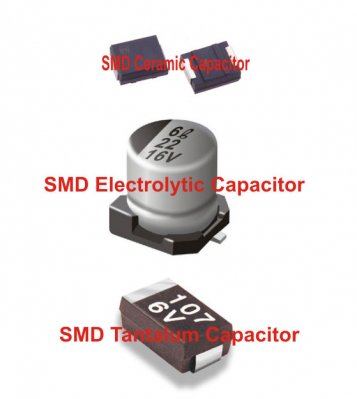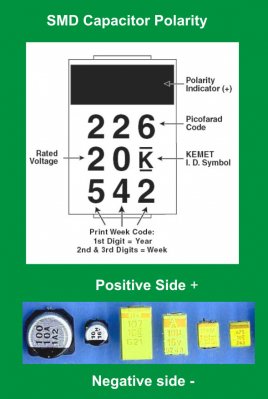The SMD Capacitor is a rectangular block made up of dielectric in which a number of interleaved metal electrodes are present. This structure gives high capacitance per unit volume. The inner electrodes are connected to two terminals made of either Silver Palladium(AgPd) alloy in the ratio 65:35 or silver dipped with a barrier layer plated nickel and covered with plated tin (NiSn).

How to make it?
SMD ceramic capacitor is made from its raw material for the dielectric. The substance is first grind and mixed. The substance is then heated to 1100 to 1300 degree to get the required composition. The resultant mass is then reground and additional materials are added to get the dielectric property. The next step is mixing the mass with a solvent and binding adhesive. Then sheets are made through casting or rolling. After making the sheet, electrode material is printed on the sheet and pressed at high temperature of 1400 degree. The electrodes now become completely enclosed. Packaging of SMD capacitors is similar to the SMD resistors.

SMD Electrolytic capacitors are marked with the value and working voltage. The value may be included as uF (microfarad) or as a code. For example, 33 6V indicates 33 uF 6V capacitor. Coding method involves use of letters to indicate the value. Coding is done by using a Letter to indicate the working voltage and three letters to indicate the capacitance in Pf (Pico Farad).First two letters indicate the significant figures and the third letter its multiplier. For example the code G 106 indicates 4 Volts 106 PF or 10 uF.

Letters indicating the working voltage are
e – 2.5V
G – 4 V
J – 6.3 V
A – 10 V
C – 16 V
D – 20V
E – 25 V
V – 35 V
H–50V
Tantalum SMD capacitors are also available which have higher capacitance than the SMD ceramic capacitors. Leakage current is negligible in Tantalum capacitors and there is high accuracy in capacitance.
Filed Under: Electronic Projects


Questions related to this article?
👉Ask and discuss on EDAboard.com and Electro-Tech-Online.com forums.
Tell Us What You Think!!
You must be logged in to post a comment.